
On the occasion of St. Stephen’s Day on August 20th, the legendary “Golden Train Wagon” will be on exhibition in Budapest’s Kossuth Square in front of the Parliament. The “Golden Train” was originally built in 1938 to transport the “Holy Right Hand,” (i.e. the right hand of King Stephen I) on the occasion of the 900th anniversary of his death for a tour all over Hungary.
The original article was written by our sister site, Ungarn Heute.
Related article
Saint Stephen - Who Was He, and Why Is He So Important?
August 20th, the biggest national holiday of the country, is founding day of the Christian Hungarian state, as well as the feast of St. Stephen and the “New Bread” in Hungary. The founder of the Hungarian Kingdom and Hungarian statehood, King Stephen I, under whose rule the Christianization of the country started, died on August […]Continue reading
Originally, the magnificent carriage was built in only four months. The “Golden Train” consisted of five wagons and the locomotive. Four luxury wagons were at the disposal of the ecclesiastical and secular notables, and between them was the “Golden Wagon,” which held the Holy Right. On the front of the locomotive was a huge cross, which shone in the evening.
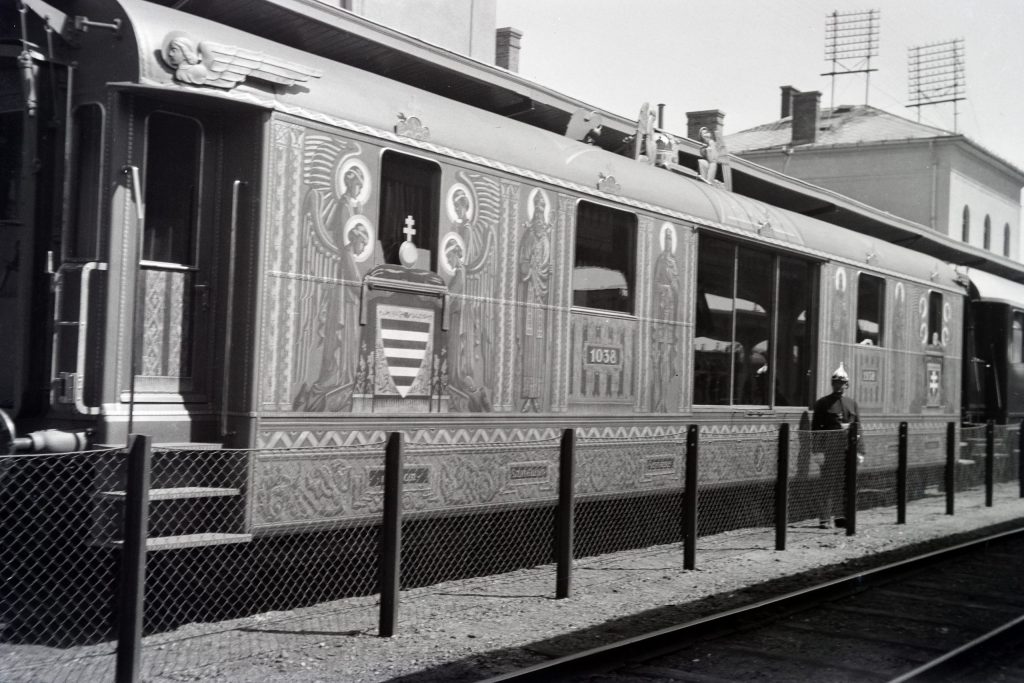
Golden train in Székesfehérvár, 1938. Photo: Fortepan/Márta Adelhardt
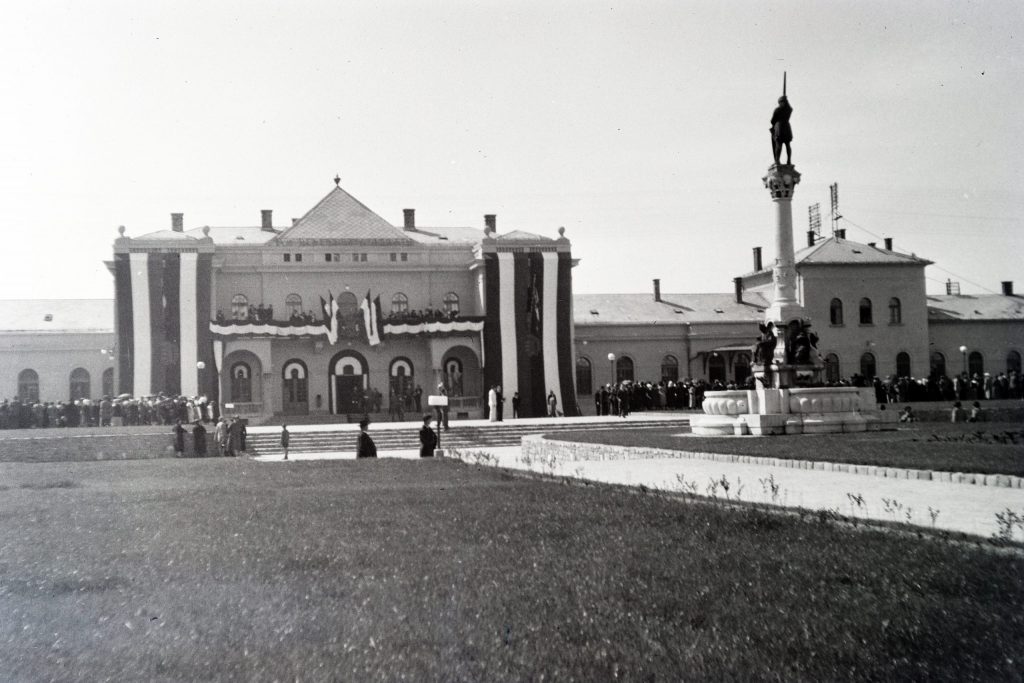
Decorated railroad station of Székesfehérvár at the arrival of the Golden Train in 1938. Photo: Fortepan/Márta Adelhardt
The “Golden Train” consisted of three parts: between the two small rooms where the crown guards were located, was the actual state room with the reliquary in the middle. The side walls were covered with purple velvet, the ceiling with white silk. The relic was illuminated with reflectors so that it could be seen from a further distance. The exterior of the carriage was painted in gold, silver, purple, and green colors, as well as the full images of the Hungarian saints Stephen, Gerhard, Gisela, Margaret, Mauritius, Ladislaus, and Elizabeth. On the ceiling was the enlarged copy of St. Stephen’s crown between two praying angels. The side walls of the carriage were built with sliding glass panes in a golden frame.
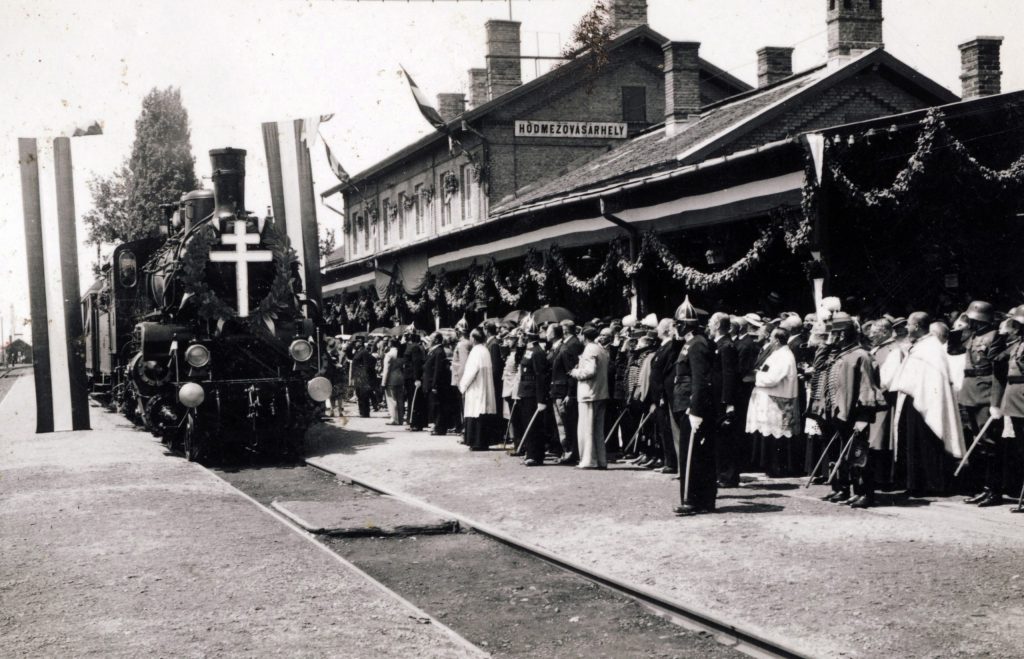
Golden train in Hódmezővásárhely, 1938. Photo: Fortepan/Jesuit Archives
The “Golden Train” visited 22 cities in Hungary in 1938, where the relic was displayed and saluted. The railroad guards’ houses and stations were beautifully decorated. In Székesfehérvár, the relic was transported through the city on a special velvet carriage with eight white horses, and by a special car in Miskolc. In Szombathely, it was greeted with cannon shots, and in Szeged, pupils waited for the special train.
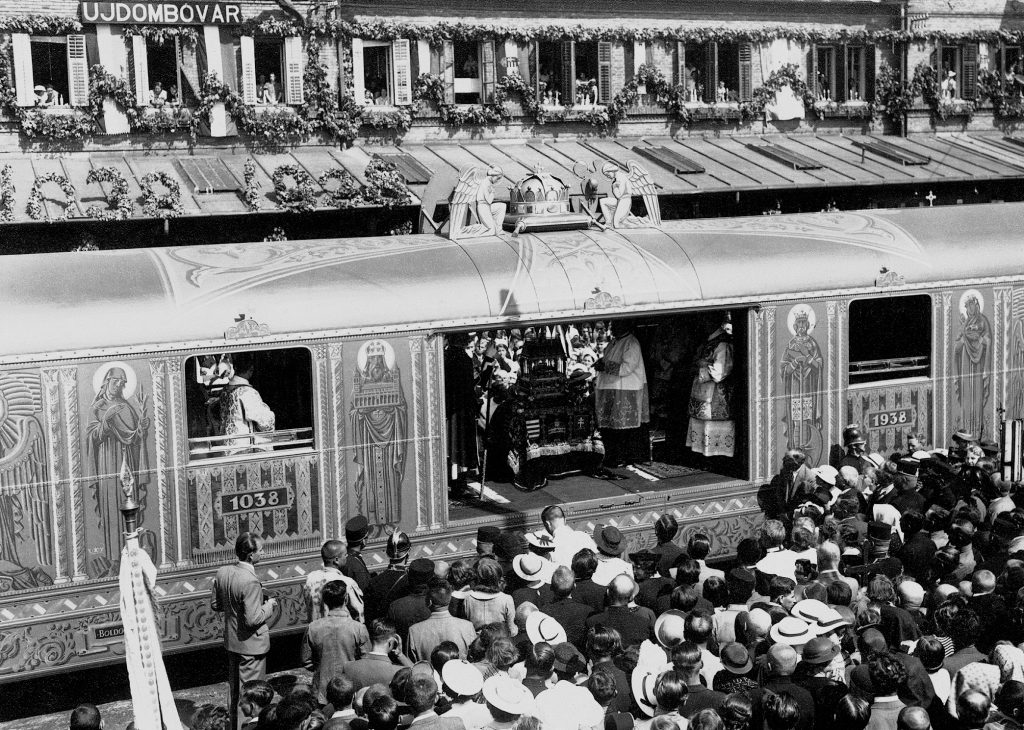
Golden train in Újdombóvár, 1938. Photo: Fortepan/Tibor Erky-Nagy
After 1944, the wagon disappeared, but various legends have spread about where it could be: one of them is that the location is an underground aircraft hangar in Bavaria. The reconstruction of the “Golden Train” was initiated by a private foundation in 2010, and as a result, the Hungarian government also joined the project in 2015, and subsequently commissioned the Hungarian National Museum to carry out the reconstruction. The reconstruction of the carriage is unique in the world, as a similar reconstruction has in fact never happened anywhere before. In addition to the period construction methods, the design also had to take into account the contemporary rules of railroad traffic.
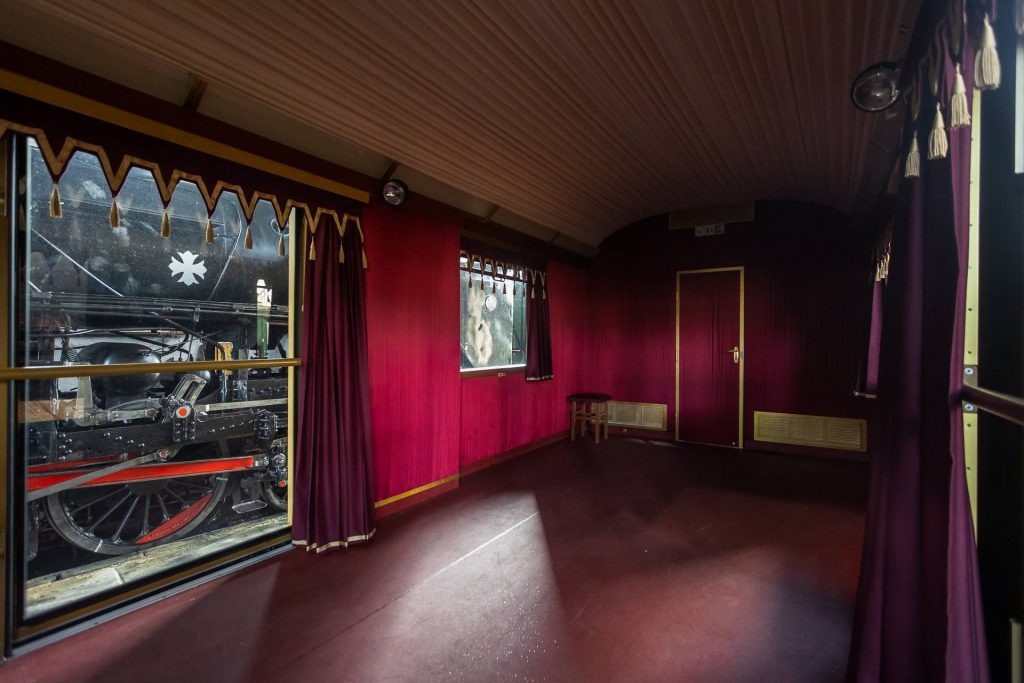
Photo: Alexandra Szentkirályi/Facebook
Featured photo by Péter Lakatos/MTI






